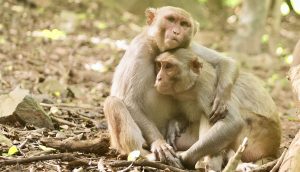
28 interesting facts about bonobos
- 👁️ 344
Bonobos, often considered one of humanity’s closest living relatives, share more than 98% of their DNA with humans. These fascinating primates are known for their peaceful and cooperative societies, largely matriarchal in structure. Native to the dense rainforests of the Congo Basin in Africa, bonobos exhibit a diverse and flexible diet that plays a crucial role in their social interactions and survival strategies. Their eating habits offer insights into their ecological role and highlight the importance of conserving their natural habitats. Let’s delve into some interesting and informative facts about the dietary habits of bonobos and their significance.
- Bonobos are primarily frugivorous, meaning fruit makes up the largest portion of their diet.
- They also consume a variety of other plant materials, including leaves, flowers, and stems.
- Insects are a part of the bonobo diet, providing them with protein.
- Unlike chimpanzees, their close relatives, bonobos rarely hunt or eat small mammals.
- They have been observed eating aquatic vegetation, indicating their ability to adapt to different food sources.
- Seasonal changes significantly influence their diet, as certain fruits become more available at different times of the year.
- Bonobos use tools, such as leaves and sticks, to access food, demonstrating their problem-solving skills.
- Social foraging is common among bonobos, fostering cooperation and bonding within groups.
- They share food among group members, a behavior believed to strengthen social ties.
- Young bonobos learn what to eat and how to find food by observing their mothers and other adults.
- Bonobos have been known to consume clay or soil, a behavior thought to help detoxify other parts of their diet or provide minerals.
- Fungi, including mushrooms, are occasionally part of their diet.
- They often forage for food in the understory and canopy layers of the forest, showing their adaptability to different habitats.
- Bonobos have a preference for sugary fruits, which provide them with quick energy.
- Their feeding behavior can influence the distribution and abundance of plant species in their habitats, showcasing their role as seed dispersers.
- Bonobos are known to consume over 200 different types of plants.
- They spend a significant portion of their day foraging and eating, sometimes traveling long distances to find food.
- The diversity of their diet is thought to be a key factor in their relatively peaceful social structure.
- Bonobos occasionally engage in “food calls,” vocalizations that communicate the discovery of food.
- Their diet varies less than that of chimpanzees, partly due to the more stable environment of the bonobo habitat.
- Bonobos have been observed practicing reciprocal food sharing, where individuals exchange food for grooming or other social benefits.
- They are capable of recognizing and remembering the locations of fruiting trees and plants in their vast home ranges.
- The bonobo’s diet has a lower percentage of animal protein compared to that of chimpanzees, correlating with their less aggressive behavior.
- Water sources, such as rivers and streams, are important for bonobos not only for drinking but also for accessing aquatic plants.
- In times of fruit scarcity, bonobos may increase their consumption of leaves and other less preferred foods.
- Their eating habits and food preferences have implications for forest conservation, as bonobos can affect the regeneration of fruiting trees.
- Habitat destruction and human encroachment threaten the availability of their natural food sources, posing challenges to bonobo populations.
- Research on bonobo diets helps conservationists develop strategies to preserve their natural habitats and ensure the availability of key food resources.
Understanding the diet of bonobos sheds light on their complex social structures, ecological roles, and the challenges they face due to habitat loss. Their reliance on a diverse array of plant and animal foods highlights the importance of conserving the rich biodiversity of their rainforest homes. By protecting these environments, we not only safeguard the future of bonobos but also preserve the intricate ecological networks that sustain them. The study of bonobo diets continues to reveal the intricate connections between species and their habitats, emphasizing the need for comprehensive conservation efforts.











